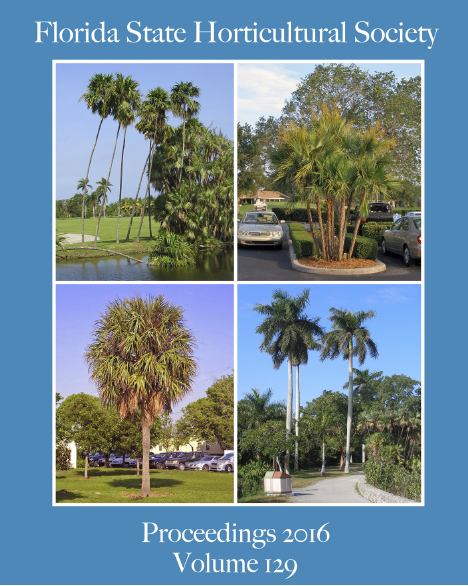Abstract
The laurel wilt pathogen [(Raffaelea lauricola (Raf)] causes a lethal disease affecting at least nine woody Lauraceae species in Florida, including avocado (Persea americana). The initial vector for this pathogen, the redbay ambrosia beetle (Xyleborus glabratus), was detected in Miami-Dade County in 2010. In 2011 dying native swampbay trees (Persea palustris) were found positive for Raf in Miami-Dade County, then in early 2012 the first avocado tree succumbed to Raf in a commercial grove. At least two other ambrosia beetle (AB) species have now been implicated as the main Raf vectors in commercial avocado groves. Recommendations for controlling the spread of laurel wilt (LW) have four components: early detection through scouting, sanitation of affected trees, prophylactic systemic fungicide treatments and ambrosia beetle control. Currently early LW detection consists of an industry-wide helicopter survey every 6 to 8 weeks to identify groves with suspect trees. This information is provided to grove owners and managers. Frequent ground-based scouting is also employed. In groves where LW has not previously been detected, sampling is recommended for verification; in groves previously positive for LW no sampling is warranted. Sanitation procedures include immediate removal and destruction of LW affected trees by uprooting or grinding, chipping, and/or burning. Prophylactic fungicide treatments consist of infusions of propiconazole to entire groves or trees adjacent to LW affected trees (called hot-spot treatment). Ambrosia beetle (AB) control consists of bark directed applications of chemical and/or biological insecticides within one acre of LW affected trees.

